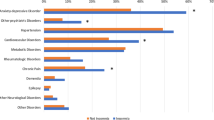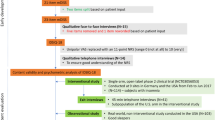Abstract
Objective: Insomnia is a prevalent sleep complaint which has been reported to be greatly associated with reduced health-related quality of life (HR-QOL) and increased healthcare resource use. This study documents the prevalence of insomnia, and its impact on patients’ HR-QOL and healthcare resource use in managed- care settings in the US.
Design and Setting: A multi-site survey of 5 American Medical Group Association ® (AMGA) clinics was conducted. Each clinic mailed questionnaires to 1100 randomly selected individuals enrolled in its healthcare system and distributed questionnaires to 400 individuals during a clinic visit and prior to seeing a physician. The questionnaire was a form of the Health Status Questionnaire with the well-validated Medical Outcomes Study 36-Item Short Form (SF-36) Health Survey, a 3-question depression screen, a sleep questionnaire, demographic variables, and questions about medical encounters and prescription and over-thecounter (OTC) drug use.
Main outcome measures and results: Approximately one-third of managedcare enrollees in this study reported insomnia with daytime dysfunction. Individuals with insomnia reported lower HR-QOL scores and increased healthcare resource use compared with individuals with no insomnia. After controlling for demographic variables and comorbid conditions, the negative association of insomnia remained significant on all HR-QOL scores, emergency room visits, calls to the physician and OTC drug use.
Conclusions: Insomnia is significantly associated with reduced HR-QOL and increased healthcare resource use in enrollees of managed-care organisations.
Similar content being viewed by others
References
Chilcott LA, Shapiro CM. The socioeconomic impact of insomnia. Pharmacoeconomics 1996; 10 Suppl. 1: 1–14
Kupperman M, Lubeck DP, Mazonson PD, et al. Sleep problems and their correlates in a working population. J Gen Intern Med 1995; 10(1): 25–32
Marquis P. Sleep disturbance: a component of health status.Pharmacoeconomics 1996; 10 Suppl. 1: 25–8
Pinard G. Quality of life in insomnia. JAMA Southeast Asia 1993; Suppl.: 6–7
Rombaut N, Maillard F, Kelly F, et al. The quality of life of insomniacs questionnaire (QOLI). Med Sci Res 1990; 18: 845–7
Bixler ET, Kales A, Soldatos C, et al. Prevalence of sleep disorders in the Los Angeles metropolitan area. Am J Psychiatry 1979; 136: 1257–62
Kales JD, Kales A, Bixler EO, et al. Biopsychobehavioral correlates of insomnia, V: clinical characteristics and behavioral correlates. Am J Psychiatry 1984; 141: 1371–6
Johnson LC, Spinweber CL. Quality of sleep and performance in the navy: a longitudinal study of good and poor sleepers.In: Guilleminault C, Lugaresi E, editors. Sleep/wake disorders:natural history, epidemiology, and long-term evolution.New York: Raven Press, 1983: 13–28
Weyerer S, Dilling H. Prevalence and treatment of insomnia inthe community: results from the Upper Bavarian field study.Sleep 1991; 14: 392–8
Simon GE, VonKorff M.Prevalence, burden, and treatment ofinsomnia in primary care. Am J Psychiatry 1997; 154: 1417–23
Ware JE, Snow KK, Kosinski M, et al. SF-36 Health Surveymanual and interpretation guide. Boston: New England MedicalCenter, 1993
Hatoum HT, Kania CM, Kong SX, et al. Prevalence of insomnia:a survey of the enrollees at five managed care organizations.Am J Man Care 1998; 4(1): 79–86
Author information
Authors and Affiliations
Corresponding author
Rights and permissions
About this article
Cite this article
Hatoum, H.T., Kong, S.X., Kania, C.M. et al. Insomnia, Health-Related Quality of Life and Healthcare Resource Consumption. Pharmacoeconomics 14, 629–637 (1998). https://doi.org/10.2165/00019053-199814060-00004
Published:
Issue Date:
DOI: https://doi.org/10.2165/00019053-199814060-00004




